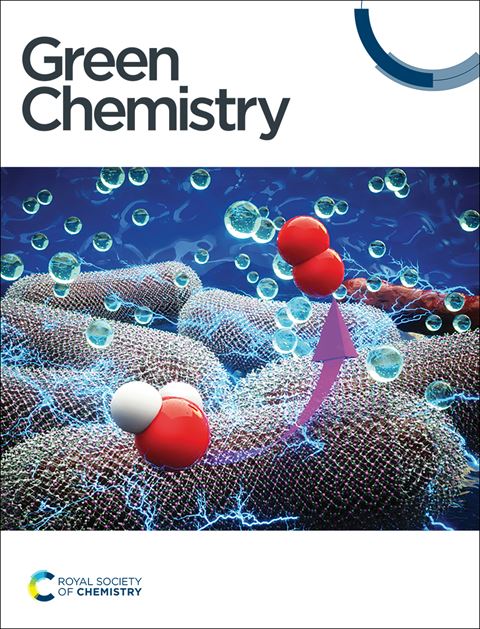EDA复合光催化诱导N/O杂环与DMSO(-d6)的光fenton样(三氘)甲基化反应
IF 9.2
1区 化学
Q1 CHEMISTRY, MULTIDISCIPLINARY
引用次数: 0
摘要
二甲基亚砜是有机合成领域中一种重要的、不可缺少的甲基化剂。我们报道了一种创新的策略,利用原位生成的EDA(电子供体-受体)配合物作为活性光催化剂,实现基于DMSO(-d6)的N/O杂环(氘)甲基化。机理研究表明,该反应是通过EDA活性催化剂、水和氧的协同作用进行的,在类似芬顿的过程中诱导羟基自由基的形成。与使用DMSO的传统fenton甲基化反应相比,该方法避开了金属催化剂和强氧化剂的需要,从而在环境友好性、安全性和经济性方面表现出显著增强。此外,多种N/O杂环,包括杜鹃花、喹草胺酮和香豆素,与反应体系相容,这在以前的传统Fenton甲基化反应中是无法实现的。本文章由计算机程序翻译,如有差异,请以英文原文为准。
A photo-Fenton-like (trideutero)methylation reaction of N/O heterocycles with DMSO(-d6) induced by EDA complex photocatalysis†
DMSO is a prominent and indispensable methylating agent within the realm of organic synthesis. We report an innovative strategy employing an in situ generated EDA (electron-donor–acceptor) complex as an active photocatalyst to achieve N/O heterocycle (deutero)methylation based on DMSO(-d6). Mechanistic investigations reveal that the reaction proceeds through the synergistic action of the EDA active catalyst, water, and oxygen, inducing the formation of hydroxyl radicals in a Fenton-like process. Compared to traditional Fenton-based methylation reactions utilizing DMSO, this approach circumvents the necessity for metal catalysts and strong oxidants, thereby exhibiting significant enhancements in environmental friendliness, safety, and economy. Furthermore, a variety of N/O heterocycles, including azauracils, quinoxalinones, and coumarins, are compatible with the reaction system, which was previously unattainable in conventional Fenton methylation reactions.
求助全文
通过发布文献求助,成功后即可免费获取论文全文。
去求助
来源期刊

Green Chemistry
化学-化学综合
CiteScore
16.10
自引率
7.10%
发文量
677
审稿时长
1.4 months
期刊介绍:
Green Chemistry is a journal that provides a unique forum for the publication of innovative research on the development of alternative green and sustainable technologies. The scope of Green Chemistry is based on the definition proposed by Anastas and Warner (Green Chemistry: Theory and Practice, P T Anastas and J C Warner, Oxford University Press, Oxford, 1998), which defines green chemistry as the utilisation of a set of principles that reduces or eliminates the use or generation of hazardous substances in the design, manufacture and application of chemical products. Green Chemistry aims to reduce the environmental impact of the chemical enterprise by developing a technology base that is inherently non-toxic to living things and the environment. The journal welcomes submissions on all aspects of research relating to this endeavor and publishes original and significant cutting-edge research that is likely to be of wide general appeal. For a work to be published, it must present a significant advance in green chemistry, including a comparison with existing methods and a demonstration of advantages over those methods.
 求助内容:
求助内容: 应助结果提醒方式:
应助结果提醒方式:


